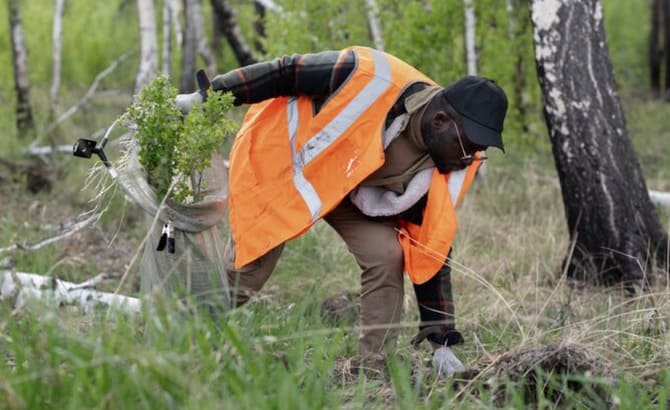
Trees add beauty, shade, and value to any property—but when a once-thriving tree starts showing signs of decline, it can be worrying. Wilting leaves, peeling bark, and brittle branches might seem like the beginning of the end, but in many cases, dying trees can be brought back to life through proper care and professional restoration.
Tree restoration focuses on diagnosing the underlying problems that affect a tree’s health and applying targeted treatments that encourage natural recovery. With expert techniques and consistent care, many trees can recover their strength, stability, and vitality.
1. Recognizing the Early Signs of Decline
Before a tree can be revived, it’s crucial to identify the warning signs of distress. Some symptoms of a dying or stressed tree include:
- Sparse, discolored, or wilted leaves
- Cracked or peeling bark
- Dead or broken branches
- Fungal growth or mushrooms at the base
- Soft or hollow wood
- Excessive insect activity
Catching these signs early gives you a better chance at saving the tree. Sometimes the issue is temporary—like drought stress or nutrient imbalance—but if left unaddressed, it can quickly lead to irreversible damage.
2. Diagnosing the Cause
Trees can decline for many reasons, and understanding the root cause is the first step to restoration. Professionals use diagnostic tools and experience to pinpoint the problem, which could be:
- Poor soil conditions: Compacted or nutrient-deficient soil restricts root growth and oxygen flow.
- Pests and diseases: Insects like borers and aphids, or fungal infections, can weaken a tree’s structure.
- Improper watering: Overwatering can suffocate roots, while underwatering leads to dehydration.
- Mechanical damage: Construction work or lawn equipment can injure roots and bark.
- Environmental stress: Storm damage, pollution, or temperature extremes can all strain a tree’s health.
Once the cause is clear, the right restoration plan can be created to match the tree’s specific needs.
3. Soil and Root Restoration
Healthy trees start with healthy soil. One of the most effective ways to revive a struggling tree is to improve the root environment. Professionals may use techniques such as:
- Deep root fertilization: Injecting nutrients directly into the soil around the roots for faster absorption.
- Soil aeration: Loosening compacted soil to improve oxygen and water flow.
- Mulching: Adding organic mulch around the base to retain moisture and regulate temperature.
These steps help restore the natural ecosystem around the roots, allowing them to recover and support the tree more efficiently.
4. Pruning and Structural Care
Dead or damaged branches not only look unsightly but also drain energy from a tree trying to survive. Professional pruning removes these weak points, redirecting nutrients to healthy areas and encouraging new growth.
Proper pruning also improves air circulation, reduces disease risk, and strengthens the tree’s overall structure. When done correctly, it helps the tree recover balance and stability while preventing potential hazards from falling branches.
5. Pest and Disease Management
Pests and fungi are common culprits in tree decline. Restoration specialists identify infestations early and apply targeted treatments that protect the tree without harming the surrounding environment.
This may involve organic sprays, trunk injections, or systemic treatments that eliminate pests and promote new, healthy tissue growth. Regular monitoring ensures that once the problem is controlled, it doesn’t return.
6. Ongoing Maintenance and Monitoring
Reviving a dying tree isn’t a one-time process—it requires continued care. Even after restoration, trees benefit from periodic checkups to monitor growth, soil condition, and overall health.
Professional arborists can adjust care plans seasonally, ensuring the tree stays strong through changing weather conditions. With consistent watering, fertilization, and pruning, a once-declining tree can return to full health and continue thriving for decades.
Final Thoughts
Tree restoration blends science, patience, and expertise. Through proper diagnosis, soil improvement, pruning, and pest management, many dying trees can be revived instead of removed.
By investing in professional restoration, you not only save a tree but also preserve the beauty and environmental value it brings to your property. With the right care, even a fading tree can make a strong comeback—standing tall once again as a living symbol of resilience and renewal.
This post was written by a professional arborist at Arborist St Petersburg FL. Robert Miller is the owner of Arbor Wise Professional Tree Care, a locally owned and operated tree service company that offers superb lawn care by the most experienced Arborists. Arborwise Tree Services is a tree removal company that offers stump removal, tree pruning, stump grinding, fertilization, and tree restoration. We have an extraordinary lawn care industry notoriety covering the Pinellas county area.